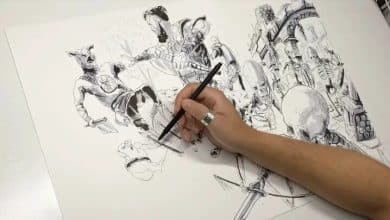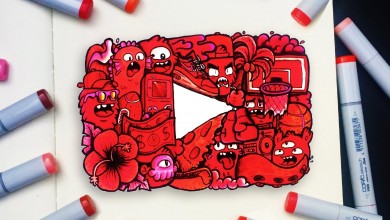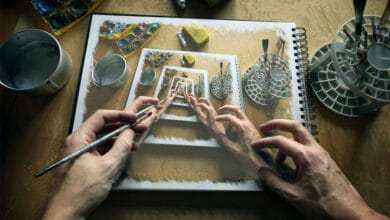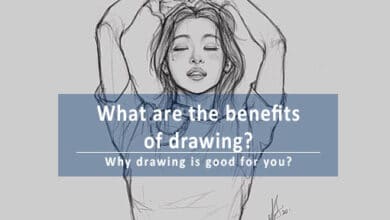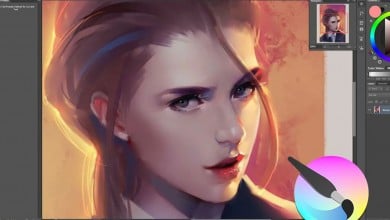The ability to create art, particularly through drawing, is a fascinating skill that humans have honed over centuries. With the stroke of a pencil, artists bring to life vivid landscapes, detailed portraits, and imaginative worlds. But, is drawing a skill that can be learned, or is it an innate talent that only a few are born with? This question has puzzled many and has been a subject of discussion among artists, educators, and scientists. This comprehensive guide will delve into the nuances of drawing as a skill and a talent, explore its importance, and provide resources for aspiring artists.
Key Takeaways
- Drawing can be both a skill and a talent. While some individuals show natural abilities from an early age, anyone can learn and improve their drawing skills with dedication and practice.
- Regular practice, exploration of different techniques and mediums, and constructive feedback are crucial for improving drawing skills.
- Drawing has cognitive benefits and can serve as a therapeutic activity. It can improve focus, motor skills, and promote creativity.
- Technology has significantly impacted the art of drawing, introducing new tools and platforms for digital art.
Is Drawing a Skill or Talent?
Drawing is both a skill and a talent. This dichotomy can initially seem confusing, but it gets simpler when we delve deeper into these two concepts.
A talent is an innate or natural ability. It’s something you’re born with or that you demonstrate an early propensity for. In the case of drawing, a person with talent may start doodling as a toddler and rapidly improve over time. They have a raw knack for drawing, with their drawings showing a level of finesse unusual for their age.
A skill, on the other hand, is something that is learned or acquired. Skills are polished and honed through practice and dedication. In the realm of drawing, this would mean continuously working on various techniques, understanding perspectives, and mastering the art of bringing images to life on paper.
Why Drawing is a Talent
People who are naturally good at drawing demonstrate certain key attributes:
- Natural Aesthetic Sense: A keen sense of aesthetics is usually ingrained in those who possess drawing as a talent. They can appreciate beauty in various forms and reproduce it on paper.
- Innate Understanding of Proportions: Proportion in art is understanding the appropriate size and scale of different elements within a drawing. Some people instinctively grasp these principles.
- Good Hand-Eye Coordination: Drawing demands a seamless coordination between what your eyes perceive and how your hands move on the paper. Those who have this as a natural ability may find drawing relatively easier.
Here are some famous artists who are generally considered to have been born with a talent for drawing:
Why Drawing is a Skill
While some people are born with a knack for drawing, this doesn’t mean that others can’t learn it. Here are some reasons why drawing is considered a skill:
- It Can Be Taught: With the help of proper guidance and teaching, anyone can learn to draw. There are numerous art schools, online classes, and tutorials available to help you get started. Websites like Coursera and Udemy offer a plethora of drawing classes.
- It Can Be Improved With Practice: As with any skill, the more you draw, the better you get. Continuous practice can make a noticeable difference in your drawing capabilities. A great resource for practice is Drawabox, a free online course that provides structured exercises.
- Understanding of Techniques: Through learning and practice, you can understand various drawing techniques like shading, texturing, perspective drawing, etc., which can significantly enhance your drawing.
Artists who have honed their skills through continuous practice and learning include:
How to Develop Drawing as a Skill
While talent can give a head start, drawing remains a skill that can be developed and improved. Here are some steps to enhance your drawing skills:
- Learn the Basics: Understanding the basics of drawing, such as shapes, shades, and proportions, is essential. Various resources, both online and offline, can help you grasp these fundamentals.
- Practice Regularly: Consistent practice is key to improving any skill, and drawing is no different. Set aside specific time each day to draw and stick to this schedule.
- Get Feedback: Sharing your work with others and asking for constructive criticism can help you spot areas for improvement that you might not notice yourself.
- Try Different Techniques: Experiment with different drawing techniques such as shading, cross-hatching, and stippling to expand your skill set.
- Use Different Mediums: Don’t limit yourself to just one medium. Experiment with charcoal, pastels, markers, and digital drawing tools to add variety to your work and expand your capabilities.
- Explore Various Subjects: Draw different things like landscapes, people, animals, or abstract shapes. This variety will challenge your skills and prevent you from getting bored.
- Attend Workshops and Classes: Professional guidance can provide you with valuable insights and speed up your learning process. Consider enrolling in local art workshops or online drawing classes.
Drawing Talent vs Skill: The Conclusion
Drawing is both a skill and a talent. While some people may be naturally gifted, others can attain proficiency through consistent practice, learning, and a deep understanding of various drawing techniques. Whether you’re a born artist or someone who aspires to be one, remember that every stroke you make on paper brings you one step closer to mastering this beautiful form of self-expression.
Resources for Learning Drawing
If you’re interested in improving your drawing skills or exploring your potential drawing talent, here are some resources that may be helpful:
- Online Courses: Websites like Coursera, Udemy, and Skillshare offer a variety of drawing courses for all skill levels.
- Books: Some highly recommended books include “Drawing on the Right Side of the Brain” by Betty Edwards and “Fun With a Pencil” by Andrew Loomis.
- YouTube Channels: Some popular drawing tutorial channels are Proko, Draw with Jazza, Khouriamelia, and Alphonso Dunn.
- Art Communities: Platforms like DeviantArt and ArtStation provide opportunities to connect with other artists, share your work, and get feedback.
Drawing, as a talent or a skill, is a journey of continuous learning and discovery. No matter where you are on this journey, remember to enjoy the process and express yourself freely.
From a neurological perspective, drawing can provide insights into how our brain functions. Several studies have indicated that the act of drawing involves multiple brain regions and cognitive processes.
- Motor Skills: The act of drawing involves fine motor skills and hand-eye coordination. This involves the cerebellum, which plays a significant role in our motor control and precision.
- Perception: Drawing from observation involves the visual system of the brain. You observe, interpret, and then translate it into a drawing.
- Memory: When drawing from imagination, you’re tapping into the vast reserve of your memory. This not only involves the images and figures you’ve seen before but also the drawing techniques and styles you’ve learned and stored in your brain.
For more information about the neuroscience of drawing, consider checking these articles:
The Therapeutic Power of Drawing
Drawing isn’t just about creating art; it’s also a form of therapy. Many therapists use art as a form of treatment, often referred to as Art Therapy. Here are some benefits of drawing as therapy:
- Stress Relief: Drawing can be an excellent stress reliever. It can act as an outlet for emotions, enabling the artist to express feelings that they might struggle to put into words.
- Improved Focus and Concentration: Drawing requires concentration and attention to detail, which can help improve focus and attention span.
- Boosts Self-Esteem: Creating a piece of art, however simple or complex, can give a sense of accomplishment and boost self-esteem.
- Encourages Creative Thinking: Drawing stimulates the right hemisphere of the brain, encouraging creativity and innovative thinking.
To learn more about art therapy and its benefits, you can visit the American Art Therapy Association.
Frequently Asked Questions: Drawing is A Talent or a Skill?
1. Is drawing considered a skill?
Yes, drawing is considered a skill because it involves learning and mastering specific techniques such as shading, texturing, perspective, and proportions. Like any other skill, drawing requires consistent practice, patience, and perseverance to improve and excel.
2. What type of skill is drawing?
Drawing is primarily a visual and motor skill. It involves visual skills because you need to observe and interpret what you see, whether you’re drawing from life, a reference image, or your imagination. It’s also a motor skill because it requires precise hand movements and hand-eye coordination to create the drawing on paper or a digital platform.
3. Is art an innate talent or a learned skill?
Art can be both an innate talent and a learned skill. Some individuals show a natural affinity for art from a young age, which can be nurtured and developed over time. On the other hand, art can also be a learned skill. With proper training, practice, and dedication, anyone can develop their artistic abilities.
4. Is being artistic a talent?
Being artistic can certainly be a talent. Some people demonstrate a natural aesthetic sense and creativity from an early age. However, being artistic is not solely restricted to those with natural talent. It’s also a quality that can be developed and enriched through exposure to art, learning, and practice.
5. What is the difference between talent and skill?
Talent refers to a natural ability or aptitude in a specific area, which is innate and instinctive. Skill, on the other hand, is acquired through learning and practice. It involves the application of knowledge and abilities to achieve a task or objective. While talent gives a head start, skills are refined and developed over time through experience and education.
6. Is drawing a rare skill?
Drawing is not necessarily a rare skill, as many people draw, whether professionally or as a hobby. However, reaching a high level of proficiency in drawing, where one can accurately represent reality or convincingly create imaginative scenes, can be relatively uncommon and requires significant practice and dedication.
7. Why are some people so good at drawing?
Some people are good at drawing because of a combination of natural talent, practice, and learning. They may have a natural aesthetic sense and understanding of proportions, combined with fine motor skills that make their drawing process smoother. Additionally, their skills are honed by constant practice and an understanding of various drawing techniques.
8. Is drawing a hard or soft skill?
Drawing is typically classified as a hard skill because it’s teachable and measurable. It involves specific techniques, principles, and tools that can be learned and evaluated. However, some aspects of drawing, like interpreting a subject creatively or conveying emotions through art, may be considered soft skills.
9. Is creativity a gift or talent?
Creativity can be seen as both a gift and a talent. Some individuals may naturally have a higher level of creativity, making it a talent or gift. However, creativity is also a skill that can be nurtured and developed. Exposure to diverse experiences, open-mindedness, and willingness to take risks can all contribute to enhancing creativity.
10. Are people who are good at drawing smarter?
Being good at drawing doesn’t necessarily correlate with being smarter, if we define smartness in terms of cognitive abilities measured by IQ tests. However, individuals proficient in drawing often display enhanced spatial intelligence, which is the ability to understand the relationship between objects in space. They may also demonstrate higher creativity and problem-solving skills, which are forms of intelligence.
11. Does drawing take intelligence?
Drawing requires a form of intelligence, particularly spatial and visual intelligence, to understand perspectives, proportions, and relationships between objects. It also involves creative and critical thinking to conceptualize an idea and translate it into a visual form. Moreover, drawing requires emotional intelligence, as it often serves as a medium for expressing emotions and experiences. Therefore, while drawing doesn’t directly correlate with the typical definitions of intelligence like IQ, it involves a unique combination of cognitive abilities.
12. Can drawing skills be inherited?
There’s ongoing scientific debate regarding the inheritability of artistic skills. Some research suggests that certain traits like creativity and visual-perceptual skills, which contribute to drawing abilities, may have a genetic component. However, it’s widely acknowledged that environmental factors, such as exposure to art and practice, play a crucial role in the development of drawing skills.
13. What are the benefits of learning to draw?
Learning to draw offers several benefits. It can improve hand-eye coordination and fine motor skills. Drawing can also enhance observational skills as it requires studying objects and people in detail. Additionally, it can foster creativity, serve as a means of self-expression, and provide a therapeutic outlet for emotions. Lastly, learning to draw can build patience and focus, as it often requires time and concentration.
14. Can anyone learn to draw well?
Yes, with consistent practice, proper guidance, and dedication, anyone can learn to draw well. While individuals may progress at different rates due to various factors like the amount of practice, quality of instruction, and innate talent, everyone has the potential to improve their drawing skills.
15. How much time does it take to become good at drawing?
The amount of time it takes to become good at drawing varies widely from person to person. It depends on several factors, such as the individual’s innate talent, the amount and quality of practice, the complexity of the drawing style they are trying to learn, and the quality of instruction they receive. However, as a rough estimate, many art teachers suggest that with regular practice, significant progress can be seen within six months to a year.
16. How has technology impacted the art of drawing?
Technology has greatly impacted the art of drawing, opening up new possibilities for creation and sharing. Digital drawing tablets and software have introduced new techniques and tools for artists to explore. These technologies have also made drawing more accessible, as edits and corrections can be made easily without wasting materials. Furthermore, the internet has enabled artists to share their work with a global audience and gain inspiration from other artists around the world.
Conclusion
Drawing, whether viewed as a skill or talent, is a profound form of expression and communication that transcends language barriers. It’s an art form that invites us to see the world through another’s perspective and can evoke powerful emotions. While some people might have a natural knack for drawing, it’s also a skill that can be cultivated with time and consistent practice.
Remember, the essence of drawing doesn’t solely lie in perfect execution but in the joy of creation. Each stroke, each detail, each piece of art is a testament to your unique perspective and creativity. Whether you’re an experienced artist or someone just beginning their journey in drawing, embrace the process of learning and exploration. Let your creativity flow, and most importantly, enjoy the art of drawing.

